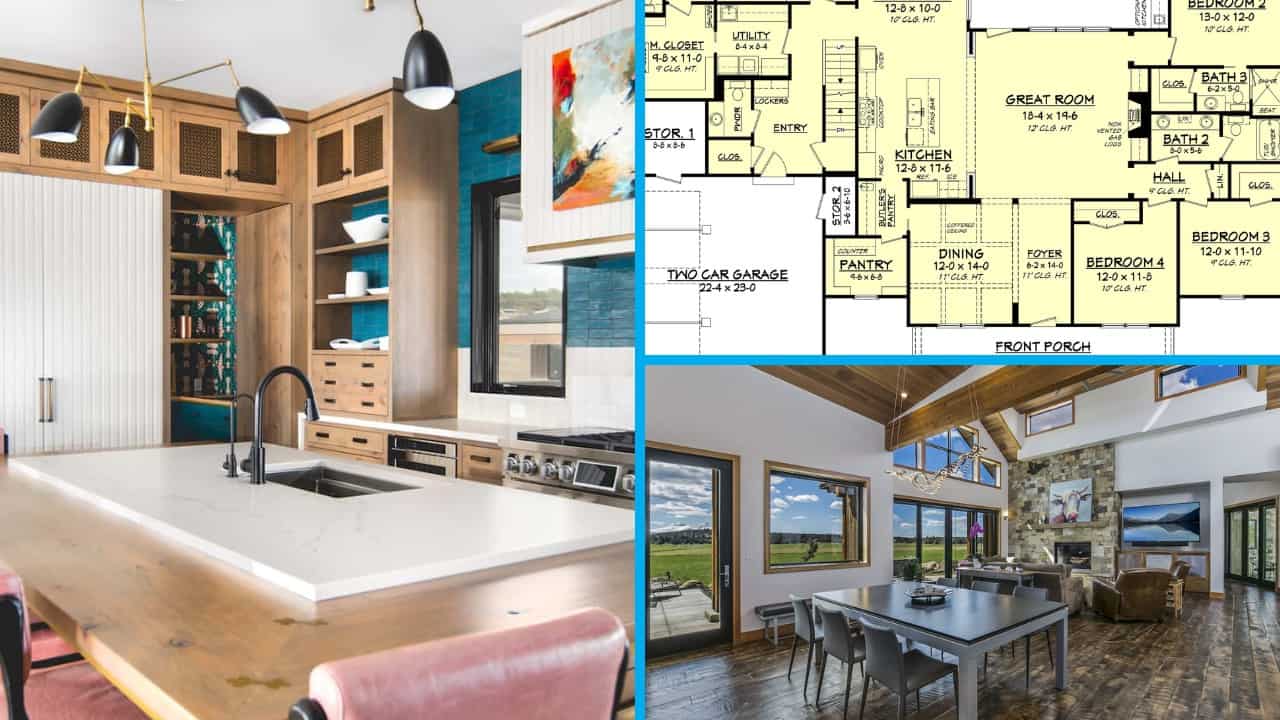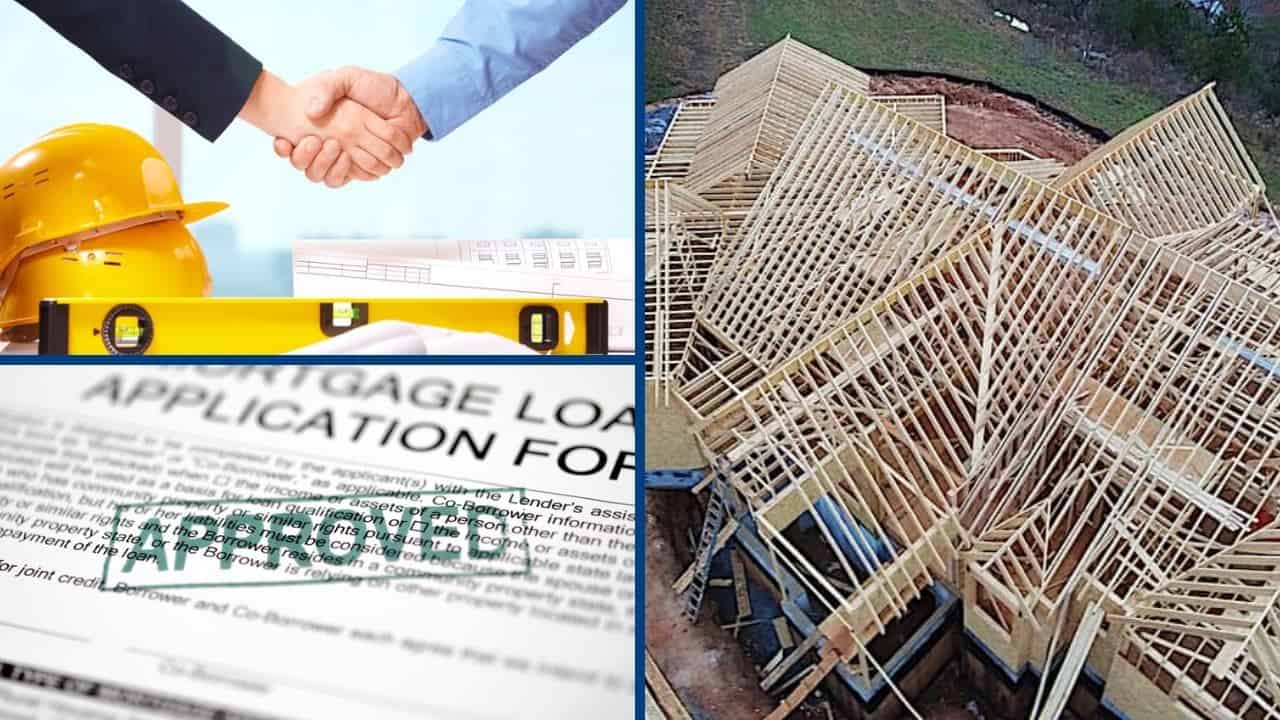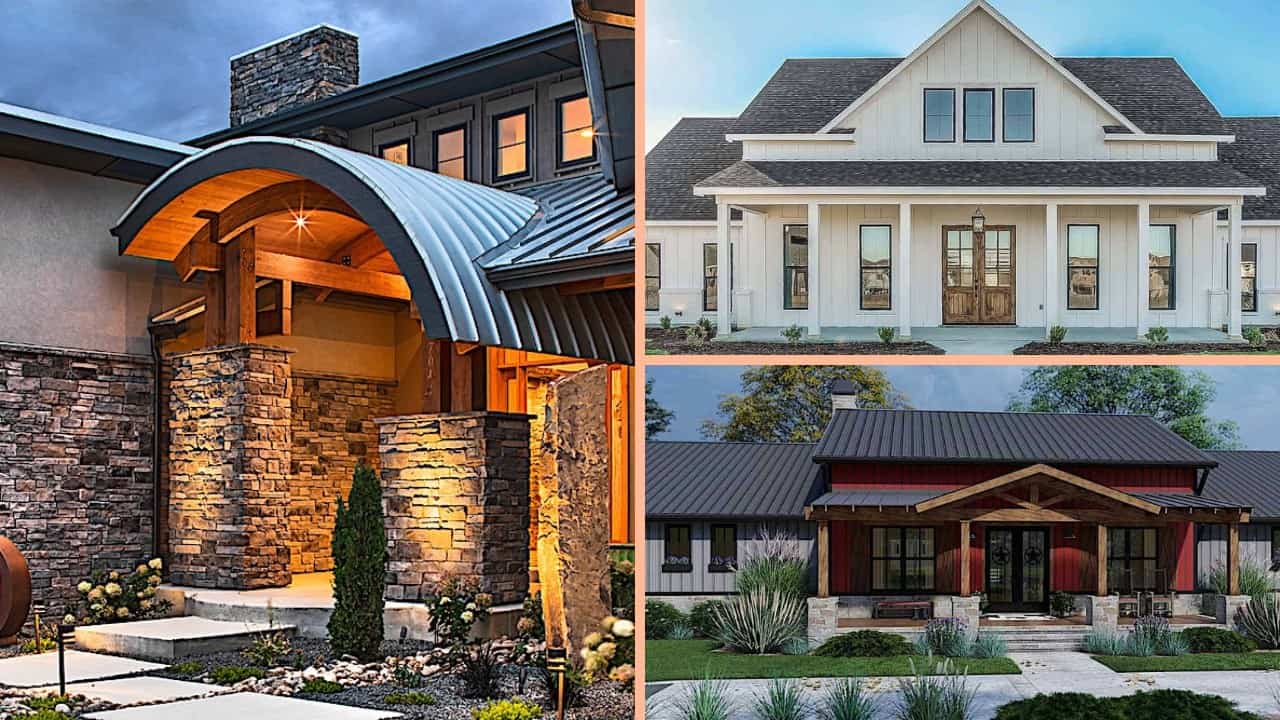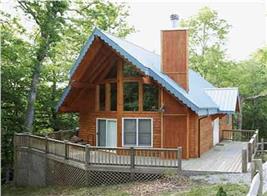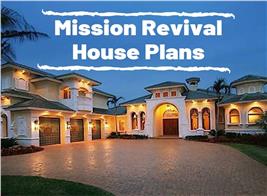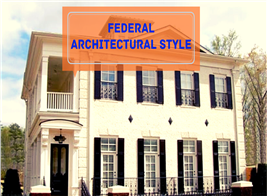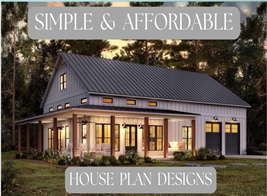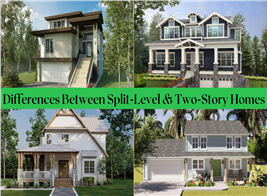Virginia Region House Plans: Something for Everyone
By Tim Bakke | Updated April 04, 2023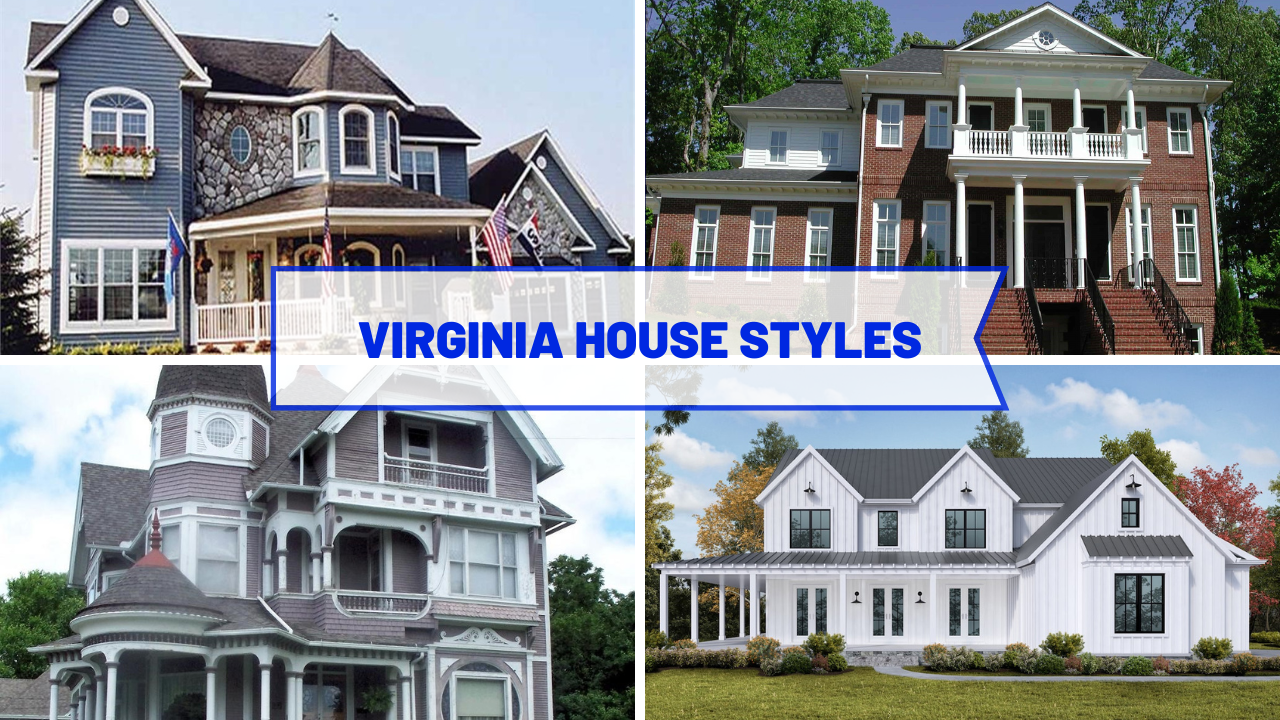
The Most Popular Building Styles in The Old Dominion
The state of Virginia, or The Old Dominion as it is often referred to, occupies an advantageous crossroads of the American experience. As one of the original 13 colonies and one of the oldest states, Virginia has seen its fair share of historic and cultural growth in the United States, and the local architecture certainly reflects that presence.
The state also sits in a unique location between America’s North and South, both in culture and in physical geography, which is also reflected by the popularity of many different types of homes.
Add to this the geography of the state – rolling farmlands, waterfront real estate along Chesapeake Bay, metroploitan sections like the DC area, and historic cities and towns – and its no surprise that youll find diversity in the housing stock. Thats one of the things that make Virginia so interesting.
Virginia’s Variety
Though many home design styles appear throughout the Virginia landscape, it’s fair to say that Colonial styles dominate. Theres no arguing that Virginia got its architectural start from its English roots.
“The architectural character of colonial Virginia’s gentry houses was shaped largely through the use of English pattern books and builders’ manuals;" says The Virginia Department of Historic Resources in a white paper. "Except in one or two cases, such as Benjamin Henry Latrobe in the 1760s, colonial Virginia had no professional architects. Designs were produced by master builders, both masons and joiners, who adapted published plans and details for new houses in consultation with their patrons. Though simplified in their application [in Virginia], the plans, elevations, and details in these books enabled skilled local builders to produce both gracefully proportioned and detailed exteriors and interiors following the principles of classical design. The aesthetic appeal of Virginia’s colonial houses made these dwellings a popular design source even for 20th-century residential projects.”
Not surprisingly, the majority of the books referenced by builders, etc., touted the Federal, or Neoclassical, style of building preferred by famous architectural personalities like Latrobe and Thomas Jefferson. Nevertheless, though many people may think of homes in Virginia as being of the Colonial, Colonial Revival, or Southern Colonial (Plantation) style, the Commonwealth has a rich diversity of styles in its residential architecture.
Whether youre looking to buy or build – or you just have an interest in historic architecture – here are a few of the most popular Virginia region house plans:
Federal or Adam Style
These traditional homes are very popular in Alexandria. You’ll be able to recognize Federal style houses by their medium to low pitched roof lines and very symmetrical windows – usually with shutters – framing the front door. (In the U.S. the British Adam Style – so-named after three Scottish brothers who pioneered the Neoclassical-themed style – was adopted and called Federal Style.) The homes are typically more than one story and have red brick facades – and borrow many of their features from Georgian style architecture, which is very popular in Virginia; you’ll tend to see most homes of the Georgian style in the Arlington area.
When built in the late 1700s, Federal style homes were intentionally extravagant and were really just meant to show off the owner’s wealth and good fortune through the luxury of the design and building materials. Today still, the style often features a center hall, large windows (sometimes a Palladian window or two), a tall one- or two-story front porch with columns, and a pediment.
Top: This 5-bedroom, 5.5-bath Federal style home shows its Georgian roots but with significant differences: the house is asymmetrical, though not the windows, and a Georgian home wouldn’t have such an ostentatious pedimented front porch (Plan #198-1104). Bottom: Symmetrical down to the wings on each side of the house, this fine, stately 4-bedroom, 5.5-bath Georgian style Colonial home has a covered portico that pushes the limits of extraneous decoration just a bit (Plan #153-1058).
Log Cabin & Bungalow
“A building tradition characteristic of the state’s western regions . . . log construction in eastern Virginia was mainly limited to slave quarters and other similarly rudimentary structures,” the Virginia Department of Historic Resources tells us. “These early log dwellings have nearly all disappeared and are known mostly through old photographs and other illustrations. Log construction in the western areas was a Germanic tradition but was quickly picked up by the Scots-Irish settlers. Indeed, log construction was very common in these regions, and scores, if not hundreds of early log dwellings and farm structures survive today. A reason that they are not more conspicuous features on the landscape is that the majority of houses were clad with wood siding from the beginning: log construction did not have quite the social status as a weatherboarded wood-frame house. Also, the wood cladding acted as insulation and a protection of the chinking between logs.”
Similar to log homes but more refined and conspicuously “prettier,” Bungalow style homes also made their appearance in the Virginia region and earned a permanent place. These sweet and simple homes were originally styled after the thatched huts of Bengali farmers in India, and the style was adopted by British – the British Empire ruled India from 1858 to 1947. British settlers in the New World, in turn, brought the style here. The style has been very popular globally, in the United States, and Virginia especially, for generations.
A bungalow house plan is characterized by a few main factors: the first one would be that the home is a single story (or, if a second story is present it’s built into a sloping roof with dormer windows), and it’s surrounded by wide porches with overhanging eaves. Other common though not necessary traits:
• Balconies
• Detailed doors
• Clapboard siding – though shingle, stone, or brick are also used
• Roofs that range from low-pitched to medium and steep
• Chimneys
• Fireplaces
• Art-glass windows
• Open floor plan
This small 1-story, 2-bedroom, 1-bath Bungalow home is a charming example of the style you might find in rural areas of western Virginia (Plan #104-1185).
Queen Anne and Victorian
The Queen Anne style is popular in the Virginia region. It is named after Queen Anne, who ruled Great Britain from 1702-1714. You might occasionally hear it described as a “loose Victorian” style, even though the Victorian era didn’t begin until much later, in 1837.
This is because the styles have many similar elements. During this period, buildings had noticeably asymmetrical facades with a pedimented front porch. They also feature many of the decorative elements commonly associated with the later Victorian era.
This style is very popular in central Virginia. Older neighborhoods in Charlottesville and Richmond also distinctively feature the Queen Anne style.

One of the most beloved features of a Victorian home is their flare for design. When these homes were built (in the mid nineteenth century), home architecture wasn’t just about form and function anymore. Builders started to incorporate decorative elements simply because they looked nice.
You’ll be able to recognize a Victorian home in Virginia because it’s always at least two stories, sometimes three, has plenty of cozy nooks and dormer windows, and often, a tower element.
This contemporary, stripped-down interpretation of a Victorian home would nevertheless be right at home in many neighborhoods in Virginia. The 3-bedroom, 2.5-bath house has several key Victorian features – deep front porch, turret, steep roof – and a traditional layout inside with all bedrooms, including master suite, upstairs (Plan #126-1284).
Greek Revival, Gothic Revival – and Southern Plantation
The Greek Revival style really has its roots in the state of Virginia during the second half of the 18th century. Thomas Jefferson preferred Palladianism and the Federal style evident in his Monticello, but despite his preferences, Greek Revival became one of the most recognizable Virginia – indeed national – home styles because of the influence of famous architects like Benjamin Henry Latrobe and his disciples.
During the antebellum period of the mid to late 19th century, plantations in Virginia tended to be in the Greek Revival style to show off their grandeur. Homes like these Southern plantations are often called Southern Colonial.
Greek Revival homes are easy to recognize. You can identify them by their symmetrical floor plans, colonnaded large front porches, gable-end or pediment facades, and extensive use of stone and marble to accentuate a temple-like look.
Again according to the The Virginia Department of Historic Resources, “While the Greek Revival style dominated Virginia’s antebellum period, beginning in the third decade of the 19th century increasing interest developed in the Gothic Revival taste [for plantations]. Although never a major element of the Commonwealth’s architecture, Virginia preserves important examples of this romantic style.”
Virginia house plans in the Gothic Revival style tend to be very ornate. Homes in this style were built in the mid to late nineteenth century and tend to be more popular in more rural settings.
It’s also common to see churches from that era built into this style. One element that is very easy to recognize in these homes is the “gingerbread trim.” This is the carefully carved, often very ornate, wooden trim. Other elements would be the pointed arch on top of windows and doors, as well as extremely steep pitched roofs.
The pointed-arch window in the steep forward-facing gable and gingerbread trim give this house away as an example of Gothic Revival style (photo credit HouseAt114MarbleStreet by Magicpiano under license CC BY-SA 4.0)
Cape Cod
The Cape Cod is a staple in Massachusetts and New England, but because Virginia was one of the original 13 colonies with heavy British influence, it’s also found a permanent home there. The house design is styled after the English cottage, but the original Puritan settlers needed to rethink a few elements so that the structure could withstand the harsh winters in the Northeast region.
You will be able to recognize a Cape Cod home by its symmetrical appearance with a centered front entry. It will also typically have a square shape, 1.5 stories, steep gable roof with an overhang, dormers, double-hung multi-pane windows, usually a pediment over the door, and a centralized or multiple chimneys. There are normally one or two bedrooms downstairs and two upstairs (thus the dormers).

This Cape Cod style home displays many of the typical characteristics of the design: centered front door with a pediment overhead, steep gable roof, dormers, and multi-pane windows (photo by Sam Beasley on Unsplash).
Colonial Revival
This is one of the most famous “Virginian” styles, as showcased by the College of William and Mary in Williamsburg; however, some of the best examples of the Colonial Revival exist in neighborhoods of older homes in Charlottesville, Staunton, and Richmond.
These homes are typically two stories with equally-spaced windows, dormers, a prominent main entrance, and an elevated one-or two-story front porch with massive columns.
Colonial Revival homes like this are a common sight across the South, starting with Virginia. The house has 6 bedrooms, 6 bathrooms, 2 half bath, dormers, and a colonnaded 2-story front porch (Plan #120-2531).
Contemporary
While Virginia is certainly home to some beautiful homes in more historic styles, the overall vibe of the state is not entirely in the past. In the larger cities, it’s also very easy to find Virginia house plans in more contemporary styles.
You’ll see a lot of these homes in movies and on TV, as many are popular in California, but they’ve long since made the jump to the East Coast as well.
Homes in this style may have a Modern vibe: many straight lines and lots of glass, really a lot of glass, think floor to ceiling windows, or entire walls of the home made out of glass. But there are also more traditional deigns, like Farmhouse, that have a contemporary, up-to-the-minute aura through the use of metal roofs, all-white vertical siding, and minimal ornamentation.
Craftsman & Arts and Crafts
These homes are one of a kind.
Born in Britain during the Industrial Revolution, the Arts & Crafts Movement rejected mass-produced construction style and instead promoted handcrafted products made by artisans.
While the roof is somewhat low-pitched, it has wide overhangs with extensive detailing. Craftsman homes also tend to have a large covered front porch supported by flared columns set in stone or brick bases and exposed trusses and wood beams. There may also be art glass in doors and windows and lots of natural materials used throughout.
Italianate
For Virginians living in more rural areas, an Italianate home will be oriented to incorporate any slopes and or variations in the landscape, for both practical and aesthetic purposes. The style was also adopted by many wealthy farmers and plantation owners.
For these Virginia house plans, you’ll likely find more of the following elements:
- Asymmetrical floorplan
- Flat or gently sloping roof line
- Decorative rafter tails
- Tower or cupola
- A covered porch
- Arched windows
- Angled bay windows

Understated for the style, this Italianate-themed home might be found in the countryside on a farm, plantation, or horse ranch. The shallow hip roof, exposed rafter tails, tall arched windows, and front porch are earmarks of the style (photo credit: Annefield Front View by AVirginian under license CC BY-SA 3.0).
Beachfront
Not particularly known as a "shore state" like Florida, California, New Jersey, or the Carolinas to mention just a few, Virginia nevertheless has some beachfront real estate and its small share of Coastal and Beachfront style architecture.
From Virginia Beach to Chincoteague and all the areas around the Chesapeake Bay, there is ample evidence of the popularity of seashore homes, whether they are summer cottages or year-round residences built for beautiful views of the water.
Born for the beach: this vacation home has 3 to 4 bedrooms, 4 bathrooms, porches on three sides, and a roof deck for sunning yourself and enjoying stunning views of the water. The pier foundation that raises the home above ground level is smart for waterside building (Plan #196-1148).
Ranch
This home style originated in the Southwest of the U.S. in the 1920s but quickly became popular in California and were embraced by the rest of the country throught the 20th century – and yes., they also have found a home in Virginia.
These homes are one story, rectangular in shape (often in a L-shape or U-shape design), and usually simple in design and therefore affordable to build. True ranches have a shallow gable or hip roof, but contemporary ranches usually have much steeper roofs and high ceilings on the inside; the homes tend to have a larger, open floor plans, making them great for young families who need plenty of space.
With 3 bedrooms and 2.5 baths in 1996 sq. ft., this modest home lives bigger than it looks and is a great example of the Ranch style. It has a steeper roof than traditional ranches – which gives it a contemporary vibe – but the floor plan, attached garage, rectangular shape, and narrow front porch under the roof are all pure ranch (Plan #200-1029)
There are so many different kinds of Virginia house plans to choose from. If you want a more historic home with a classic look in the country, you can find it here. If you prefer a modern home in the big city, it’s also available.
No matter your budget, tastes, and preferences – if you want to buy or build – there’s something for you in Virginia.









.jpg)



